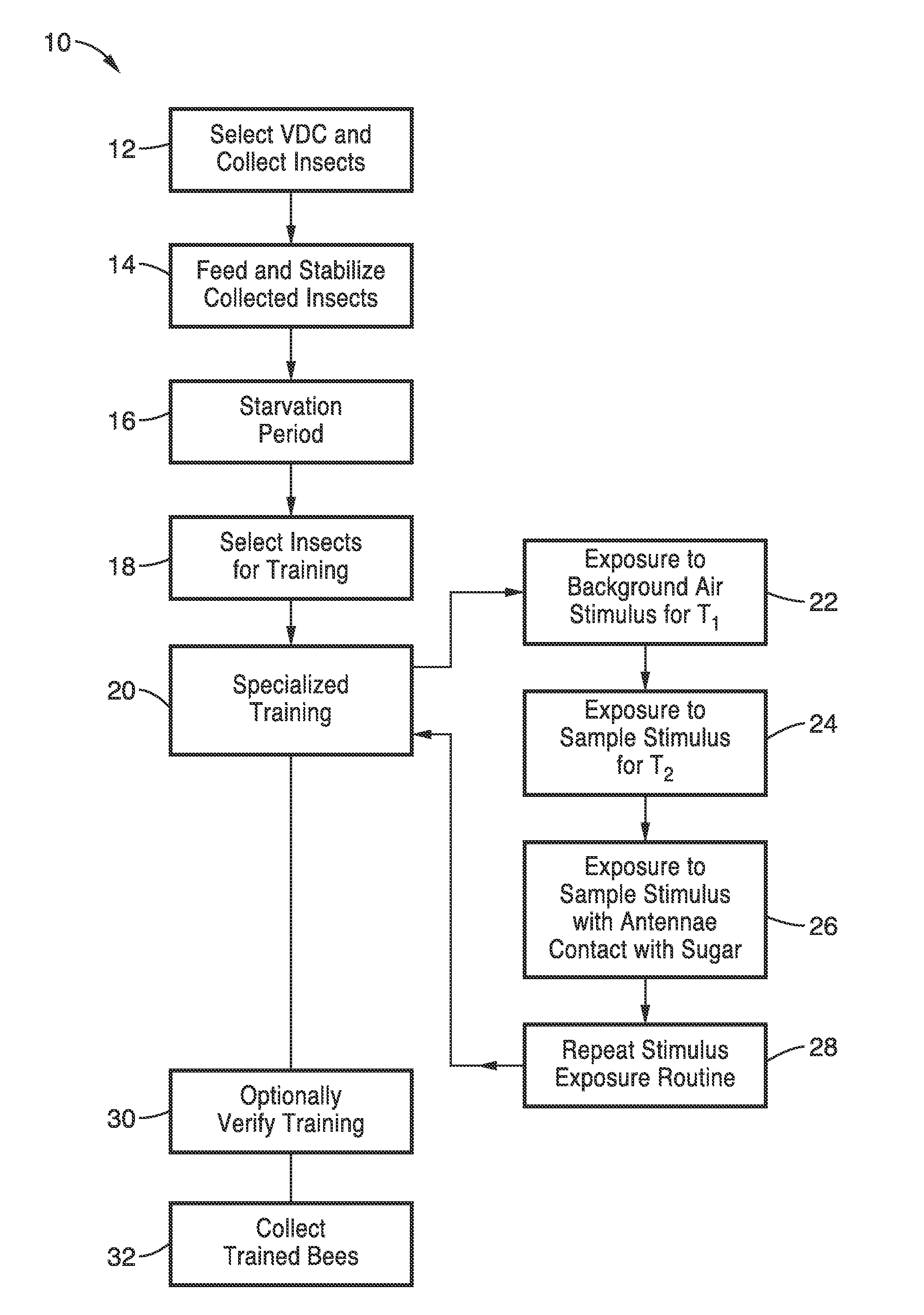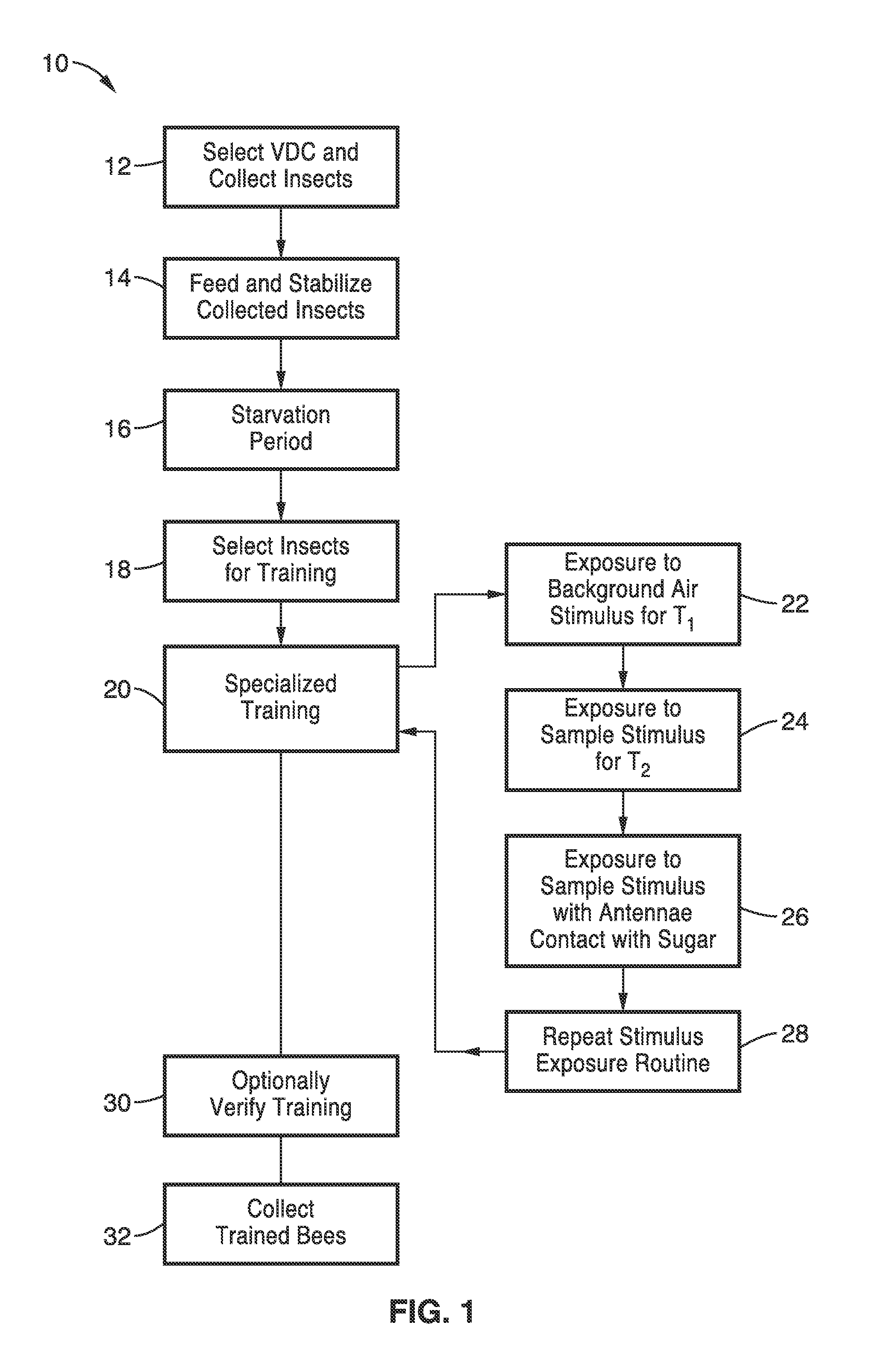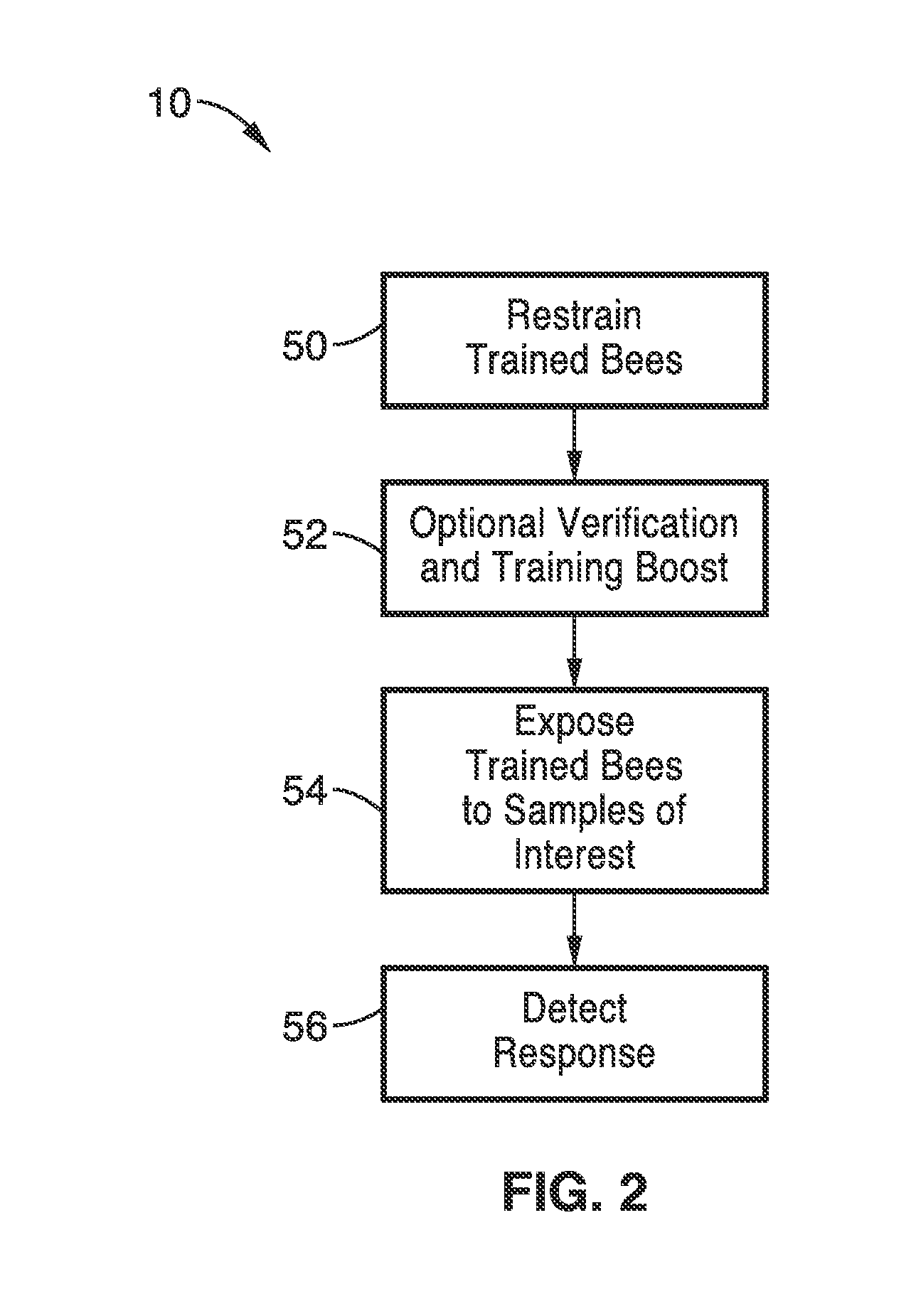Method for training honeybees to respond to olfactory stimuli and enhancement of memory retention therein
a technology of olfactory stimuli and memory retention, which is applied in the field of biological sensors and chemical detection methods, can solve the problems of difficult detection of volatile organic compounds in agricultural settings, high cost, and inability to detect analytes by this approach, so as to reduce economic and environmental costs and accelerate associative learning
- Summary
- Abstract
- Description
- Claims
- Application Information
AI Technical Summary
Benefits of technology
Problems solved by technology
Method used
Image
Examples
example 1
[0054]In order to demonstrate the functionality of the general method for training insects for detection of VOC / SVOC materials shown in FIG. 1, honeybees were selected as the sensor and infected and uninfected plants were collected. The stimulus delivery system that incorporates a constant background carrier gas consisting of the headspace captured from uninfected leaves was tested.
[0055]Foraging honeybees were collected as they returned to the hive using a vacuum device and facilitated by a hive reducer. The collected bees were transferred to an odor-resistant community domicile and given access to a mixture of honey, powdered sugar and water for approximately five hours. The food was then removed from the domicile and the bees were starved overnight for approximately 14 hours.
[0056]Individual bees were then removed and restrained within polycarbonate tubes, with only heads and antennae exposed, and the bees were assigned a subject identification number.
[0057]All of the selected be...
example 2
[0060]To further demonstrate the ability of bees to identify agriculturally related scents indicative of certain crop infestations that have vapor plume signatures that can cause significant harm to agriculture when not identified early on in infestation, grape fungus was selected for detection and training. Specifically, the fungus uncinula necator that causes powdery mildew on grapes was selected for bee detection training. This fungus is known to produce common odors such as 1-octen-3-one and (Z)-1,5-octadien-3-one.
[0061]In one embodiment of training for detection of the fungus, honeybees were trained to detect the vapor signatures of the agricultural infestation via associative conditioning. The day before each experiment, approximately 100 bees were collected at 3 pm from a colony using a modified vacuum cleaner with an insect collection tube. Foraging bees were collected from the entrance of the hive. The bees were then transferred from the collection tube into holding cages w...
example 3
[0065]An alternative embodiment for training or reinforcing prior training was demonstrated. Honeybees were trained to a scent using only a vial with the scent inside and sugar water on a cotton swab. The honeybees were trained to detect semivolatiles and volatiles via associative learning. Exposure to a scent, followed by sugar solution reward, trained the bees to extend the proboscis in anticipation of receiving a reward. The proboscis extension reflex (PER) was monitored via a camera and pattern recognition software to give a readout on an associated laptop.
[0066]In this demonstration a selected scent was placed in a vial, sealed and let sit for one minute. The vial was opened and the head of the harnessed bee was inserted into the vial. After a wait of three seconds, the bee was rewarded with sugar water. This procedure was carried out for ten bees and then the vial was re-capped and the scent was allowed to build up again. This type of training allows the training of bees in th...
PUM
 Login to View More
Login to View More Abstract
Description
Claims
Application Information
 Login to View More
Login to View More - R&D
- Intellectual Property
- Life Sciences
- Materials
- Tech Scout
- Unparalleled Data Quality
- Higher Quality Content
- 60% Fewer Hallucinations
Browse by: Latest US Patents, China's latest patents, Technical Efficacy Thesaurus, Application Domain, Technology Topic, Popular Technical Reports.
© 2025 PatSnap. All rights reserved.Legal|Privacy policy|Modern Slavery Act Transparency Statement|Sitemap|About US| Contact US: help@patsnap.com



